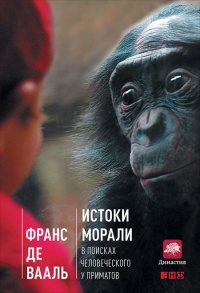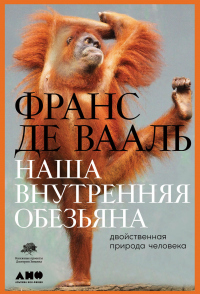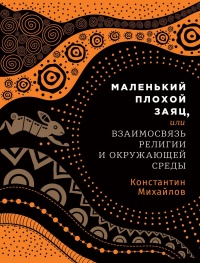Книга Достаточно ли мы умны, чтобы судить об уме животных? - Франс В.М. де Валь
Шрифт:
Интервал:
Закладка:
Hare, B., J. Call, and M. Tomasello 2001. Do chimpanzees know what conspecifics know? Animal Behaviour 61:139–51.
Hare, B., and M. Tomasello. 2005. Human-like social skills in dogs? Trends in Cognitive Sciences 9:440–45.
Hare, B., and V. Woods. 2013. The Genius of Dogs: How Dogs Are Smarter Than You Think. New York: Dutton.
Harlow, H. F. 1953. Mice, monkeys, men, and motives. Psychological Review 60: 23–32.
Hattori, Y., F. Kano, and M. Tomonaga. 2010. Differential sensitivity to conspecific and allospecific cues in chimpanzees and humans: A comparative eye-tracking study. Biology Letters 6:610–13.
Hattori, Y., K. Leimgruber, K. Fujita, and F. B. M. de Waal. 2012. Food-related tolerance in capuchin monkeys (Cebus apella) varies with knowledge of the partner's previous food-consumption. Behaviour 149:171–85.
Heisenberg, W. 1958. Physics and Philosophy: The Revolution in Modern Science. London: Allen and Unwin.
Herculano-Houzel, S. 2009. The human brain in numbers: A linearly scaled-up primate brain. Frontiers in Human Neuroscience 3 (2009): 1–11.
–. 2011. Brains matter, bodies maybe not: The case for examining neuron numbers irrespective of body size. Annals of the New York Academy of Sciences 1225:191–99.
Herculano-Houzel, S., et al. 2014. The elephant brain in numbers. Neuroanatomy 8:10.3389 / fnana.2014.00046.
Herrmann, E., et al. 2007. Humans have evolved specialized skills of social cognition: The cultural intelligence hypothesis. Science 317:1360–66.
Herrmann, E., V. Wobber, and J. Call. 2008. Great apes' (Pan troglodytes, P. paniscus, Gorilla gorilla, Pongo pygmaeus) understanding of tool functional properties after limited experience. Journal of Comparative Psychology 122:220–30.
Heyes, C. 1995. Self-recognition in mirrors: Further ref lections create a hall of mirrors. Animal Behaviour 50: 1533–42.
Hillemann, F., T. Bugnyar, K. Kotrschal, and C. A. F. Wascher. 2014. Waiting for better, not for more: Corvids respond to quality in two delay maintenance tasks. Animal Behaviour 90: 1–10.
Hirata, S., K. Watanabe, and M. Kawai. 2001. "Sweet-potato washing" revisited. In Primate Origins of Human Cognition and Behavior, ed. T. Matsuzawa, 487–508. Tokyo: Springer.
Hobaiter, C., and R. Byrne. 2014. The meanings of chimpanzee gestures. Current Biology 24:1596–600.
Hodos, W., and C. B. G. Campbell. 1969. Scala naturae: Why there is no theory in comparative psychology. Psychological Review 76:337–50.
Hopper, L. M., S. P. Lambeth, S. J. Schapiro, and A. Whiten. 2008. Observational learning in chimpanzees and children studied through "ghost" conditions. Proceedings of the Royal Society of London B 275:835–40.
Horner, V., et al. 2010. Prestige affects cultural learning in chimpanzees. Plos ONE 5: e10625.
Horner, V., D. J. Carter, M. Suchak, and F. B. M. de Waal. 2011. Spontaneous prosocial choice by chimpanzees. Proceedings of the Academy of Sciences, USA 108:13847–51.
Horner, V., and F. B. M. de Waal. 2009. Controlled studies of chimpanzee cultural transmission. Progress in Brain Research 178:3–15.
Horner, V., A. Whiten, E. Flynn, and F. B. M. de Waal. 2006. Faithful replication of foraging techniques along cultural transmission chains by chimpanzees and children. Proceedings of the National Academy of Sciences USA 103:13878–83.
Horowitz, A. 2010. Inside of a Dog: What Dogs See, Smell, and Know. New York: Scribner.
Hostetter, A. B., M. Cantero, and W. D. Hopkins. 2001. Differential use of vocal and gestural communication by chimpanzees (Pan troglodytes) in response to the attentional status of a human (Homo sapiens). Journal of Comparative Psychology 115:337–43.
Howell, T. J., S. Toukhsati, R. Conduit, and P. Bennett. 2013. The perceptions of dog intelligence and cognitive skills (PoDIaCS) survey. Journal of Veterinary Behavior: Clinical Applications and Research 8:418–24.
Huffman, M. A. 1996. Acquisition of innovative cultural behaviors in nonhuman primates: A case study of stone handling, a socially transmitted behavior in Japanese macaques. In Social Learning in Animals: The Roots of Culture, ed. C. M. Heyes and B. Galef, 267–89. San Diego: Academic Press.
Hume, D. 1985 [orig. 1739]. A Treatise of Human Nature. Harmondsworth, UK: Penguin.
Hunt, G. R. 1996. The manufacture and use of hook tools by New Caledonian crows. Nature 379:249–51.
Hunt, G. R., et al. 2007. Innovative pandanus-folding by New Caledonian crows. Australian Journal of Zoology 55:291–98.
Hunt, G. R., and R. D. Gray. 2004. The crafting of hook tools by wild New
Caledonian crows. Proceedings of the Royal Society of London B 271: S88 — S90. Hurley, S., and M. Nudds. 2006. Rational Animals? Oxford: Oxford University Press.
Imanishi, K. Man. 1952. Tokyo: Mainichi-Shinbunsha.
Inman, A., and S. J. Shettleworth. 1999. Detecting metamemory in nonverbal subjects: A test with pigeons. Journal of Experimental Psychology: Animal Behavior Processes 25:389–95.
Inoue, S., and T. Matsuzawa. 2007. Working memory of numerals in chimpanzees. Current Biology 17: R1004 — R1005.
Inoue-Nakamura, N., and T. Matsuzawa. 1997. Development of stone tool use by wild chimpanzees. Journal of Comparative Psychology 111:159–73.
Itani, J., and A. Nishimura. 1973. The study of infrahuman culture in Japan: A review. In Precultural Primate Behavior, ed. E. Menzel, 26–50. Basel: Karger.
Jabr, F. 2014. The science is in: Elephants are even smarter than we realized. Scientific American, Feb. 26.
Jackson, R. R. 1992. Eight-legged tricksters. Bioscience 42:590–98.
Jacobs, L. F., and E. R. Liman. 1991. Grey squirrels remember the locations of buried nuts. Animal Behaviour 41:103–10.
Janik, V. M., L. S. Sayigh, and R. S. Wells. 2006. Signature whistle contour shape conveys identity information to bottlenose dolphins. Proceedings of the National Academy of Sciences USA 103:8293–97.
Janmaat, K. R. L., L. Polansky, S. D. Ban, and C. Boesch. 2014. Wild chimpanzees plan their breakfast time, type, and location. Proceedings of the National Academy of Sciences USA 111:16343–48.
Jelbert, S. A., et al. 2014. Using the Aesop's fable paradigm to investigate causal understanding of water displacement by New Caledonian crows. Plos ONE 9: e92895.

























